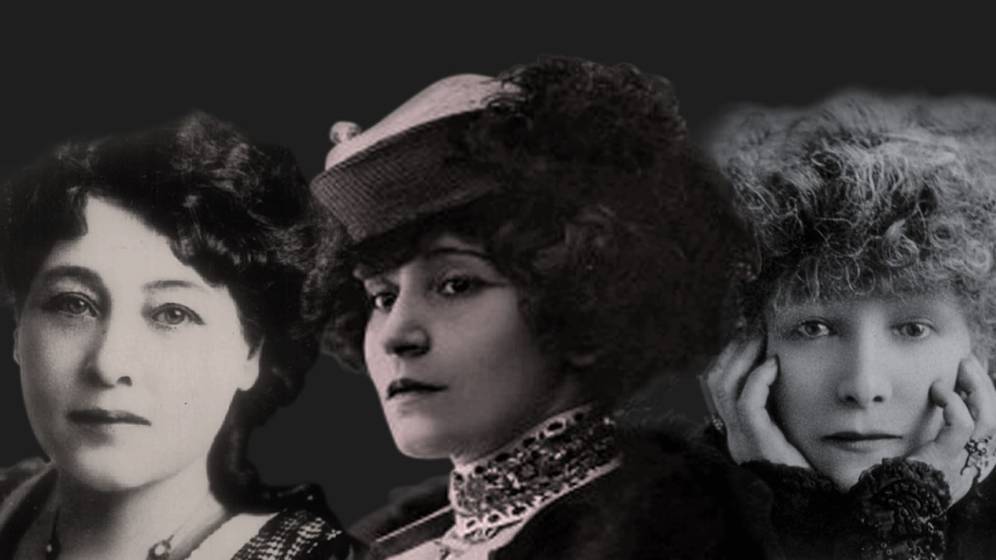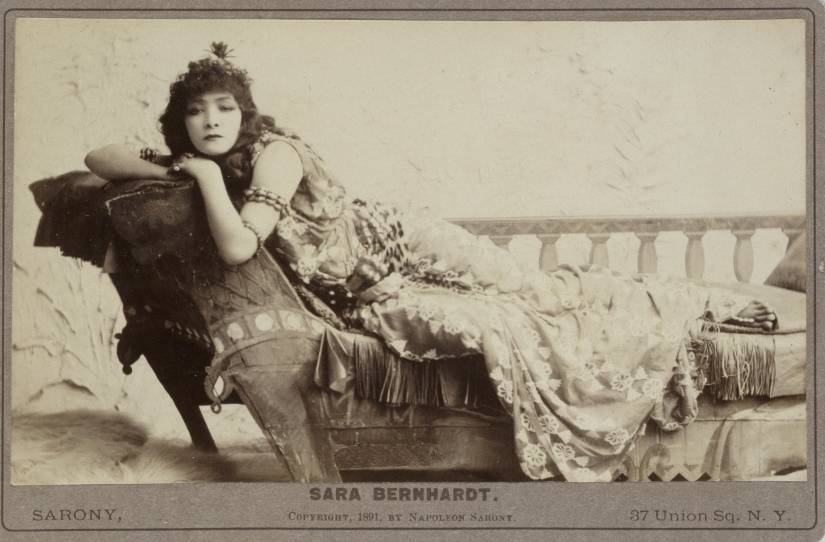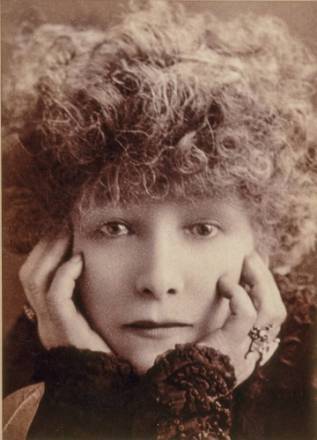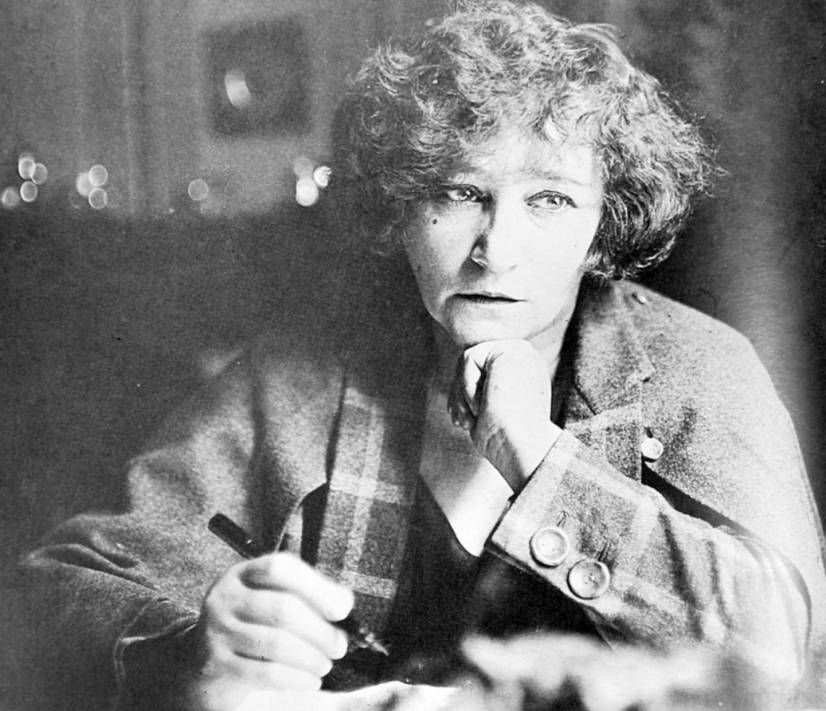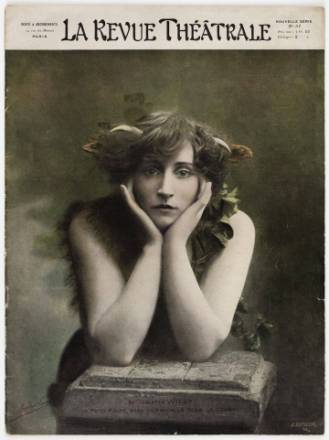2023 will undoubtedly be marked by the fourth centenary of the birth of Blaise Pascal. Writer, moralist, mathematician, physicist, inventor, this ' frightening genius », according to the words of Chateaubriand, born on June 19, 1623 and died prematurely at the age of thirty-seven, wrote a dense and diverse work, which never ceases to question the man of the twenty-first century. We will have an opportunity to come back to that.
However, the commemorations of the year 2023 do not stop there, far from it (see our box). We have focused on three key personalities in women’s creation, whose paths, sometimes fraught with pitfalls, are as exciting as they are amazing. She is an actress, a writer and – more unknown – a cinema pioneer.
Sarah Bernhardt, the famous tragic actress, whose genius also reveals that there was a prehistory of the «star system»; Colette, the writer whom Mauriac called the « joyful ogress », a marvellous literary sensibility; and finally Alice Guy, the first director of fiction films, a case of school of disappearance of the fame of a woman, devoured by that of Louis Feuillade, and that of Georges Méliès, who shared the place of French cinema pioneers without her.
Sarah Bernhardt, a «sacred monster» in all its states
No doubt that next March, the procession of characters to which Sarah Bernhardt (1844-1923) lent her gesture and her «golden voice» will cross the minds that will have the chance to participate in the five festive days organized by the «Sarah dans toutes ses états», founded by Laurence Cohen, director of the Compagnie à Bulles. Le magnétisme parisien, from the Espace Cardin to the Théâtre de la Ville, from Jean-Jacques Henner Museum at the Renaissance theatre, from Father Lachaise to the Church of Saint-François de Sales, not to mention the other places in demand, will be of high intensity, when the masts of the «Divine» will invest them.
Laurence Cohen is inhabited by Sarah Bernhardt. For the past year, she has challenged herself to bring together all those who, like her, are in love with the sacred monster. They will participate in a rich tribute, which will include a reading, a lecture, a “historic procession”, a concert at the Orangerie, a dinner show on the “Sarah Bernhardt” menu, a “Belle Époque” ball at the 9th Arrondissement Town Hall… Five days (22-26 March) dedicated to the great Sarah by this group of 65 partners, followed by eight days in Belle-Île-en-mer (30 April-8 May). A Belle-Île indeed is located the fascinating house of the artist, labeled «Maison des Illustres» by the Ministry of Culture.
In short, an armful of love events in honor of the woman who electrified the sets, whose waves are still spreading around her theatre, in Châtelet. It must be remembered that it was by the Nazis that he was unbaptized and that thus, if he finds his name with its reopening after work, it is not only a matter of memory.
For its part, the Petit Palais, the Museum of Fine Arts of the City of Paris, to which the National Library of France and the Musée Carnavalet contribute, will not be left out, since it will offer to the public a comprehensive and exceptional overview of the life and work of Sarah Bernhardt (1844-1923). Nearly 400 works exhibited to give an idea of the success of the mythical performer of the greatest playwrights on stages around the world (stage costumes, photographs, paintings, posters), but also of her sculptural talents and her intimate life: her interior, her wardrobedress, her taste for quirks and quirks.
The exhibition, entitled And the woman made the star (Jean Cocteau coined for her the phrase "sacred monster") , will show, around the astonishing portrait painted by Georges Clairin, a new phenomenon, namely the rise of a world fame which, however, had nothing to do with the film industry or aviation.
Muriel Mayette-Holtz, former director of the Comédie Française, current director of the Théâtre national de Nice and academician, has joined the collective «Sarah dans toutes ses états». At the Espace Cardin on 22 March, she will read an astonishing text by Sarah Bernhardt, the Impressions of a chair, a humorous account of a balloon journey in 1878. “ Acting is a craft of craftsmanship, does she remind us. You need health, you need memory, you need a voice, you need a body, and then you need what you have inside you… talent: a human dimension, a dimension of the soul that Sarah Bernhardt had, unquestionably. His interpretations of Racine, Hugo and Rostand left such a strong impression that it is still being talked about. They have disappeared from our ears and our eyes, but not from minds or our imagination. It is a tour de force that also holds to his personality, which expressed freedom, excess, uncontrollable, self-affirmation and, basically, a brilliant feminism. »
Among the hundreds of books on Sarah Bernhardt, we can distinguish the one written by Françoise Sagan, and watch his interview on the subject, preserved by the INA, with Bernard Pivot (1987). The excellent broadcast of France Culture on the declamation of Sarah Bernhardt (The actress had her voice recorded on the very first cylinders of the Belle Epoque).
From Burgundy to Parisian life, the inexhaustible resources of Colette’s work
His work, as popular as it is demanding, occupies four volumes in the Bibliothèque de la Pléiade. Her life is known, she is not lacking in panache: nigger of her first husband who made her discover the Parisian life, then dancer and pantomime in the music hall, lover frivolous «Missy» (Mathilde de Morny), later remarried twice (she moved to the Palais-Royal in 1938) and returned to literature, unanimously respected, admired by Mauriac and Aragon, she presided over the jury of the Prix Goncourt from 1949 to his death in 1954. She is the subject of a national funeral, the first woman to receive this honour.
If it were necessary to stick to the proofs of love of its readers, it would suffice to be interested in the history of the Burgundian house where Colette (1873-1954) lived until the age of 18. Purchased in 2011 by the Association «La Maison de Colette», she receives the label «Maison des Illustres» of the Ministry of Culture. After five years of a formidable work of historical restitution, today is a real «Maison-Livre». Proof, indeed, of a fine frequentation of the work by its enthusiasts, since of its first text (Claudine at school, 1900) until its last (Those old ladies, 1954), including The House of Claudine (1922) and Sido (1930) Colette made his lost home one of his strongest characters. “ The colour and pattern of a wallpaper, the detail of an engraving, the shape of an object, piece after piece, garden after garden, Colette has for nearly half a century sought to recreate by writing the paradise that had been stolen from her at the age of eighteen. »
This is why, among other themes, and particularly that of the free woman, Frédéric Maget, president of the Society of Friends of Colette and director of his House, came to confer under the dome of the Institute, on January 28 (Colette’s day of birth) with Antoine Compagnon, Valérie Aubert and Chantal Thomas. France Mémoires unveiled the programme of events planned in France and Europe, posted on the Friends of Colette website. Of note: the exhibition of the Jan Michalski Foundation (Switzerland), which began on 13 January. Other exhibitions will be proposed, for example at the Richard Anacréon Museum in Granville, in Châtillon-Coligny, the last living place of the Colette family in the Loiret, and in Besançon where Colette and Willy owned the Monts-Bouccons estate. Events (readings, screenings, conferences) will take place throughout France, but also in Europe (Italy, Germany, the Netherlands, Spain, etc.) and around the world (New York, Hong Kong, Beirut).
Finally, beyond the commemorations, an in-depth encounter of the author, besides the reading of his works, will gain much to the discovery of the Colette MuseumMuseum of France by the Ministry of Culture, and to the Colette’s house, Maison des Illustres, both justifying the trip to Saint-Sauveur-en-Puisaye!
Among the events, publications and reissues of Colette’s work, we will note the novelty of a volume of the Library of the Pleiades collecting the most famous novels. There may also be interest in My truths, the book of interviews that the novelist had given to André Parinaud in 1949. Do not miss, also, the file of the last issue of the Revue des deux mondes, nor the publication of Our Colette, a portrait of Colette by her readers, by Frédéric Maget (meeting and readings by Sabine Haudepin on February 8 at the Delamain bookstore).
Alice Guy, the rediscovery of a major figure of emerging cinema
His work and history have been rediscovered, and have given rise to books, several documentaries and radio broadcasts. But perhaps the most restorative tribute in 2018 was to create, thanks to the journalist, Véronique Le Bris, a cinema prize in his name.
The award ceremony, held in April at the Max Linder Cinema, always begins with a first part dedicated to the memory of this great unknown personality: projection of recovered films, lectures or testimonies that make the news of Alice Guy (1873-1968). This year, on the occasion of the 150th anniversary of the artist, Véronique Le Bris will be keen to reserve for the public some good editorial surprises, and will contribute (hopefully others will imitate him!) to commemorate the life and work of Alice Guy as they deserve.
Let us judge! A child in Chile, a teenager in Paris, an orphan in charge of a family who trained in stenotyping to find a salary, secretary to Léon Gaumont at twenty (and witness of the first projections of the Lumières brothers), Alice Guy became the first producer, screenwriter and director of fiction (as early as 1896), then director of film production at Gaumont, in its Buttes-Chaumont workshops (which produce sound films, the phonoscenesfrom 1902 onwards). Thus directing her own achievements and taking a leading part in the birth of the film industry, she also took the time to train Louis Feuillade.
But his career does not end there. Following an idyll lived in Berlin with Herbert Blaché, an English operator of the Gaumont branch in London, whom she married in 1907, her boss sent her with him to the United States to promote the phonoscene. She left her place to Louis Feuillade, but soon founded her own production company in New York (Solax Film Co, 1910). There are more than 500 works to his credit, of which there is no longer any that about fifty across the world, with at least two masterpieces, a Life of Christ, a 35-minute feature film, which is considered to be the first peplum in the history of the world of cinema and The Lure, a triumph at the box office in 1914, of which, so far, we have not found a single copy.
Woman respected by a profession where she excels and where she transmits (' Be natural ” she shows in her studios), a famous and influential personality (she launches the first movie star, well forgotten today: Olga Petrova), everything succeeds him on the East Coast, in these early times of American cinema, including his two maternities. Then come the 1920s. Abandoned by her husband for an actress whom he took to Hollywood, where the American film production migrates, she goes herself to meet him in California, without succeeding in saving her couple or reconnecting with his professional successes. She chose to return to France, where she spent the rest of her life disappearing, unfortunately, from memories. We will go so far as to attribute his films to his collaborators, who will let them do...
Source available entirely online: The Forgotten Garden, 1995 Canadian documentary (excerpts from interviews with Alice Guy, participation by her American family, Nicolas Seydoux, CEO of Gaumont, and American film historians.)
France Mémoire: highlights 2023
Since 2021, national commemorations have been a mission entrusted to the Institut de France. Its dedicated service, “ France Mémoire », draws up an annual calendar of milestones in the history of France. Nourishing our national memory, basing it on solid historical knowledge and opening it up to informed debates by specialists is the essence of its mission.
Like Molière or Proust in 2022, Blaise Pascal, whose fourth centenary will be celebrated in June, will occupy a very large place in national commemorations this year. We will return to the author of the Provincial and of Thoughts, mathematician and inventor of genius.
Personalities whose anniversary will be commemorated include the birth of Marguerite de France (1523), engraver Robert Nanteuil (1623), mathematician and astronomer Nicole-Reine Lepaute (1723), Ernest Renan (1823), Charles Péguy (1873), Elie Faure (1873), and mime Marceau (1923).
2023 will also be the anniversary of the death of Gustave Eiffel (1923), Pierre Loti (1923), Maurice Barrès (1923), Jacques Maritain (1973) and Pablo Picasso (1973).
Finally, in 2023, we will celebrate the anniversary of cultural events, such as the construction of the Romanesque abbey of Mont-Saint-Michel (1023), the publication of the Round the world in eighty days by Jules Verne (1873), the founding of the Compagnie des Sept Troubadours de Toulouse (1323), the first public meeting of the Académie française (1673), or the publication in Paris of Alexandre Soljenitsyne’s striking work, the Gulag Archipelago (1973).
Partager la page
